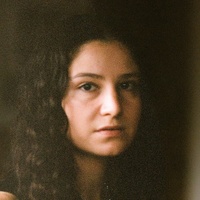On finding and protecting your passion
Prelude
Hannah La Follette Ryan is a Brooklyn-based photographer from Amherst, MA. She graduated from Vassar College in 2014. She started her @subwayhands Instagram project in 2015, inspired by countless hours spent in transit to her day job as a nanny. Her work has since appeared in the New Yorker, The New York Times, New York Magazine, Lonely Planet, The Nation, Interview Magazine, and elsewhere.
Conversation
On finding and protecting your passion
Photographer Hannah La Follette Ryan (Subway Hands) discusses finding a form, creating work that resonates, and not taking your success for granted.
As told to Loré Yessuff, 1865 words.
Tags: Photography, Process, Beginnings, Inspiration, Success, Money.
How did you get your start as a photographer?
I was a deeply shy child, and my parents wanted me to find my tribe and my passion. Early on, they sent me to a Montessori school, and I really connected with that way of learning. Actually, the self-directed model resonated with me at a young age, which is essentially foreshadowing me becoming freelance. When I was in second and third grade, there was a big book of masterpieces of the 20th century, and I would just faithfully draw them, so my parents were like, “I think she likes art.”
They sent me to this art camp when I was 13. It was like a magnet for artsy, creative kids in Western Mass. I instantly developed this huge crush on the photo counselor. He took me under his wing and taught me how to develop film in a dark room. I was just enthralled and it felt like magic. I think because I came to it really young, there was an element of the process that I couldn’t fully understand. And for that reason, it felt kind of like alchemy and really bewitched me.
I was too nervous to photograph people, even though that’s really what I wanted to capture. Instead, I photographed clouds and developed this body of work where I just took rolls of film of clouds. I was uncharacteristically really confident about them and felt like there was something really powerful and true about these photos. When we had an exhibition at the end of the summer, I was incredibly proud and I wanted something to happen with [the photos]. I was just like, “This is my life’s work.” That experience was so catalyzing for me as a young artist.
It’s often said that artists rehash the same themes over and over in their work and that there’s strength in that. I am so compelled by variation and the infinite combinations of nature and mankind.
I felt that my feelings about variation were summarized effectively by this quote in the Agnes Martin retrospective at the Guggenheim a couple of years ago, where she talks about how she’s celebrated and well-known for her repetitive and geometric compositions. She spent a month studying cloud formations and looking for echoes and repetition to see if nature ever repeats itself. And she concluded it never does. I just felt that spoke directly to Subway Hands and my interest in the captivating singularity of the individual.
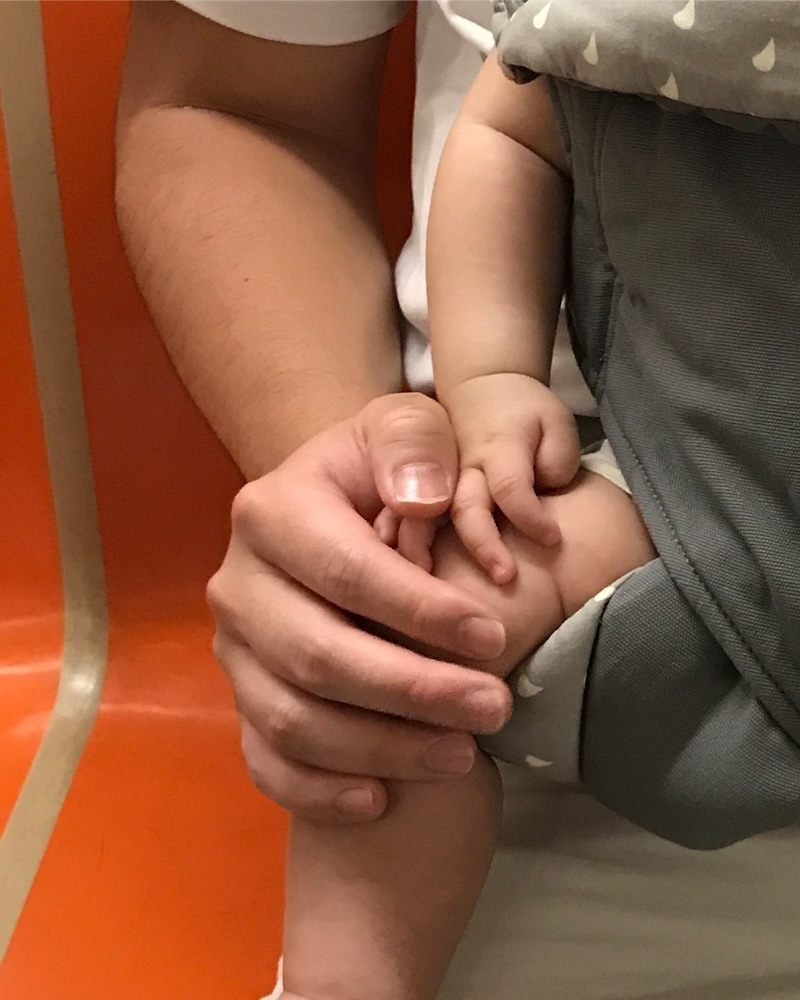
I love how that summer you had as a kid led to something so fundamental to your day-to-day life now.
Kids are little geniuses.
What has been the most surprising part of Subway Hands?
I’ve always thought of this project as this somewhat quirky hyper-fixation of mine. It’s been notable the way Subway Hands has resonated with artists and non-art alike. I think that came as a surprise to me because I have this background in art history and a lot of my references come from paintings, and at first, I didn’t see the human interest angle.
There are people who respond to the photos and don’t necessarily think about them as art. They find them emotionally resonant, which really moves me. I routinely get messages from artists asking if they can draw my photos as hand references for their art or their paintings. That feels like a more expected connection. But its broader resonance has been incredibly shocking, gratifying, and really affirming.
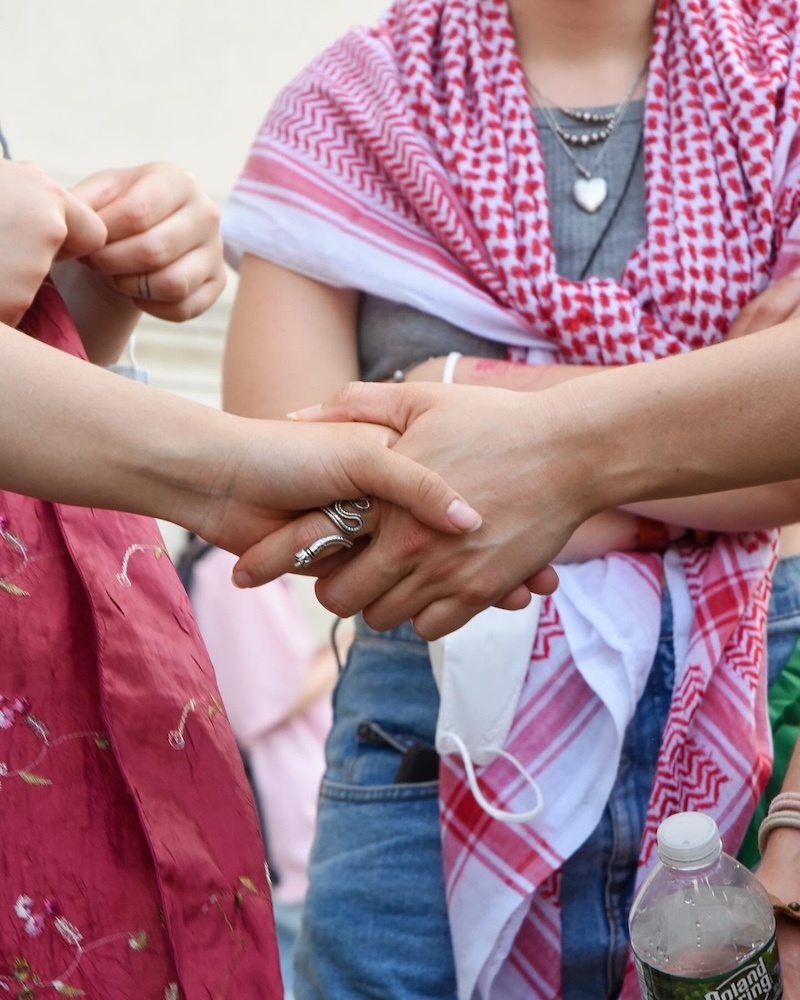
You mentioned that in a lot of the images that you make, you’re referencing different paintings. Do you set up the images thinking about a certain piece in mind, or are they taken more spontaneously?
They’re all spontaneous, but I think any project has a constellation of inspirations. I was in an art history class and I saw these portraits of Georgia O’Keeffe taken by her partner Alfred Stieglitz, and the photos were strictly of her hands. There was one photo where you see her face partially, but her hands dominate the image. That moment was really profound to me because I realized how flexible portraiture can be and how the emphasis doesn’t have to be on the face. And I think because of my early anxiety around photographing people or making people uncomfortable, that was really freeing and really powerful.
Over the course of our lives, we project these masks with our faces when we don’t want to reveal our inner emotions. And those masks can be really effective and really disinteresting to photograph. On the subway, when I first moved to New York, I was frustrated by how blank and vacant people’s faces were and immediately noticed this high contrast between faces and hands and how so much of that energy was pulled in gesture and activity in people’s laps.
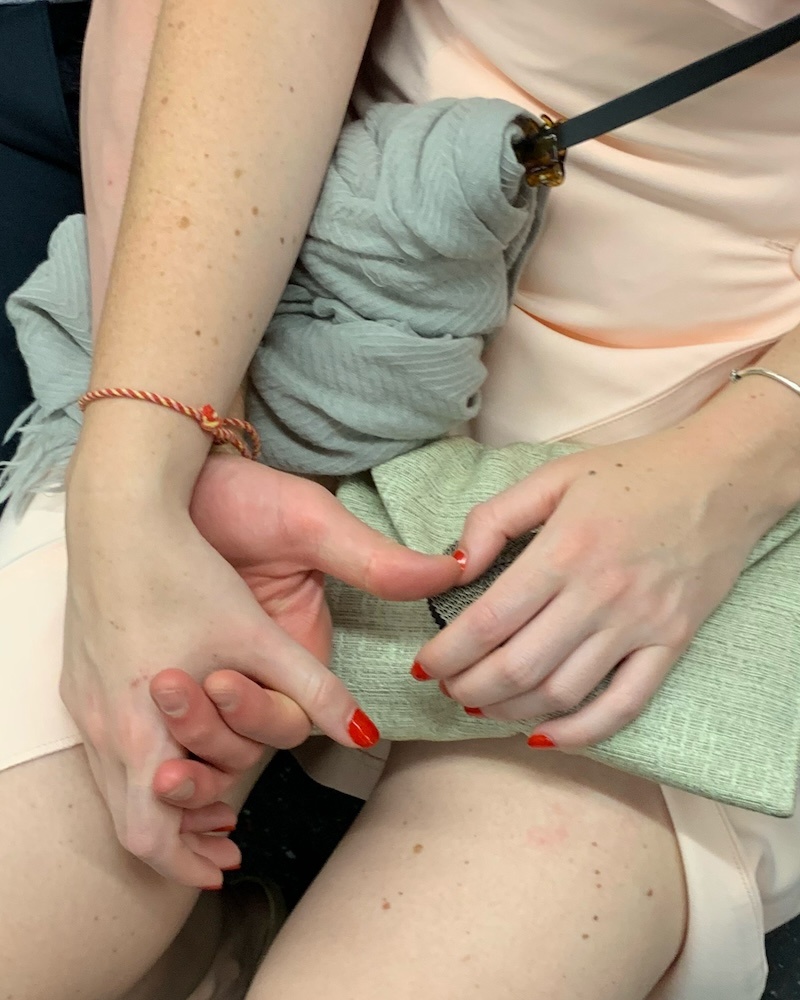
That’s interesting. I’ve never thought about how hands might reveal even more than their face, especially on the subway, depending on their mood or what’s going on.
The other day, I was stuck on the train for 30 minutes. There was no service, and it was one of the few moments where people’s faces were as expressive as their hands. And I was so tickled by that. [laughs]
How do you nourish your creative side when you’re not working? There’s a blurred line between working and not working when you’re a freelancer, but maybe you can speak on that too.
In recent years, I’ve realized how precious our creativity is and how it needs to be proactively protected in a world that’s exhausting and wearying. I’ve made a concerted effort to create artistic habits that are private and I don’t share online. I’ve started to paint again, which has been so nourishing and exciting. When you’re an artist who’s sharing much of your work publicly, it is easy to fall into the trap of collapsing your relationship with your work and the way it’s received, so I have tried to create more space in my practice for private art making. I also have a lot of friends who are artists. Two of my dear friends and I have a monthly critique group.
Oh, interesting! Are you all photographers or do you work on different mediums?
Different mediums. My friend Jack is a playwright and Robbie is a performance artist. We alternate sharing our work. I think I find it so energizing, especially the way that we’re grappling with a lot of the same larger questions in our work. I think it’s a distillation of why I have connected with teaching so much. Talking to other artists about their work is so compelling and fascinating to me.
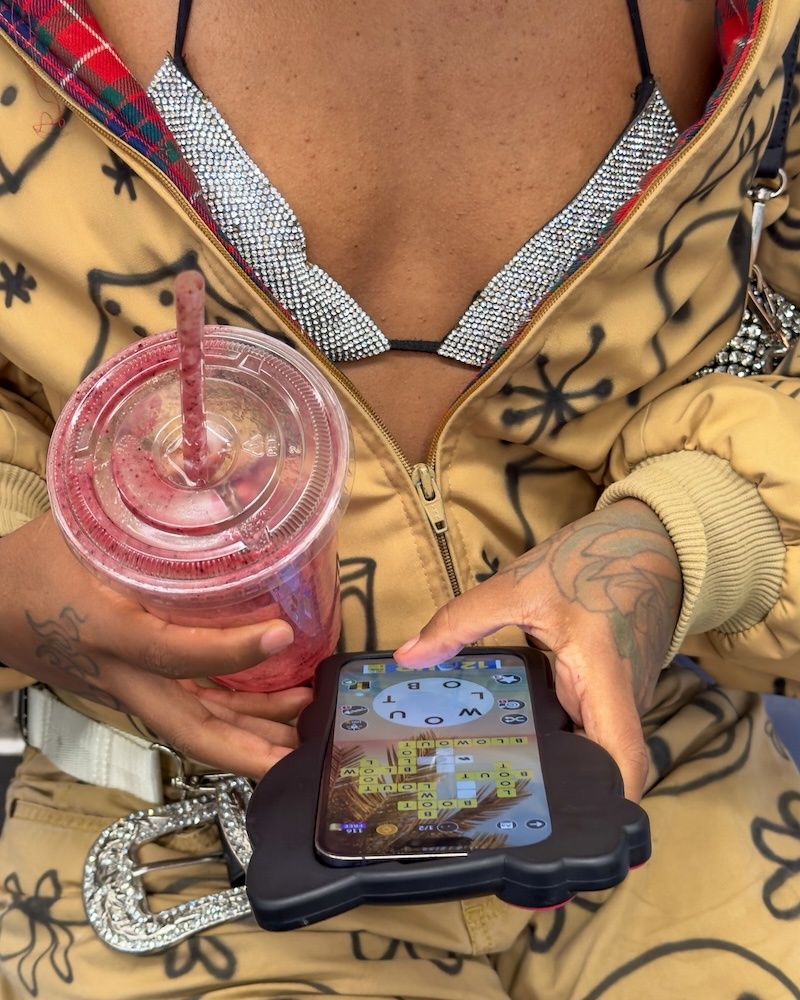
I’d love to hear more about that. How did you get into teaching and how has it been?
I was approached during the pandemic to teach a class at the International Center of Photography on the iPhone, using the phone as a fine art artistic tool. Around the same time, I had a photographer friend ask me to speak with his class. These opportunities cohered into speaking about my work more formally. I found that my work as a photographer, documenting strangers, is quite solitary and siloed. In many ways, I am a really social person, and getting to add this layer of connection to my practice and my habits has been so gratifying and has been like a counterbalance to my way of working.
Yeah, I love that. I think it’s always good to have different modes and different contexts for your work, whether you’re making it or sharing how you make it or teaching.
Time to talk about money! How do you juggle the demands of making money with the desire to make meaningful work?
I have historically never made consistent money off of my art. My practice has been very self-directed and self-generated. I only became a professional photographer when that path had basically presented itself to me by getting offered these opportunities.
Before those opportunities were offered up, you never thought this was what you wanted to do?
No, and I think it was a crisis of confidence, somewhat. Now that I am a full-time artist and have to somewhat shape my work to the whims of the market, I have realized how much pressure that puts on your art-making. I feel so fortunate to be making a living as an artist for the moment, but I still have the mentality of someone who doesn’t make money off of their art.
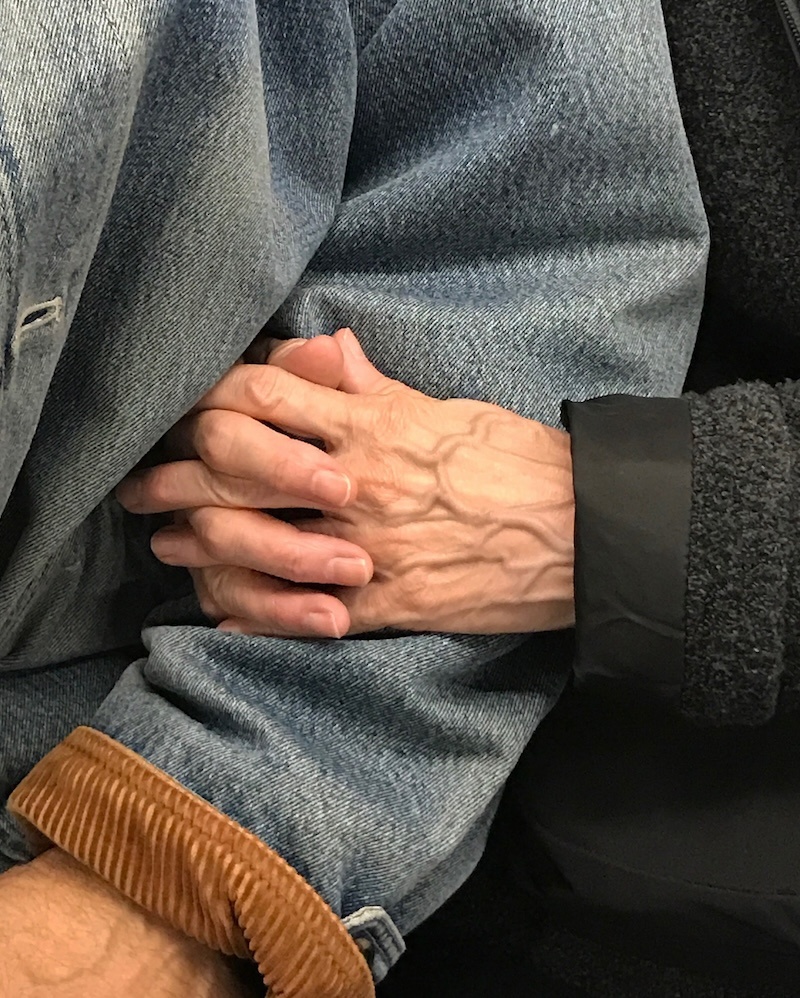
It makes sense that you’re operating from that place because we live in such a precarious society. Even if you’re doing well now, that doesn’t necessarily guarantee much for the future because of how things are set up.
Totally. I think to an extent, being a freelancer can feel like you’re on borrowed time. I try to stay very present with my gratitude for making a living. But it never feels guaranteed.
How has your approach to photography changed since the pandemic?
I’ve realized how much more community-concerned and political my work has become. I don’t think that’s a coincidence. I know that’s not a coincidence. During the pandemic, I came to teaching and was really motivated to create meaningful connections and invest in relationships outside of my work. I also started photographing social movements. My Subway Hands photos are very emotional and not without a political ideology. The first photo that I took for that project was born of this conviction that every person is worthy of a closeup. And there’s something very hierarchical about a lot of street photography where it prioritized faces and kind of like really striking faces.
I’m also trying to document New York and all of its multiplicity and layers of experience and class. During the pandemic, I teased out that thread of using photography as this tool to platform the work of activists and organizers and really emphasize their devotion and sacrifice.
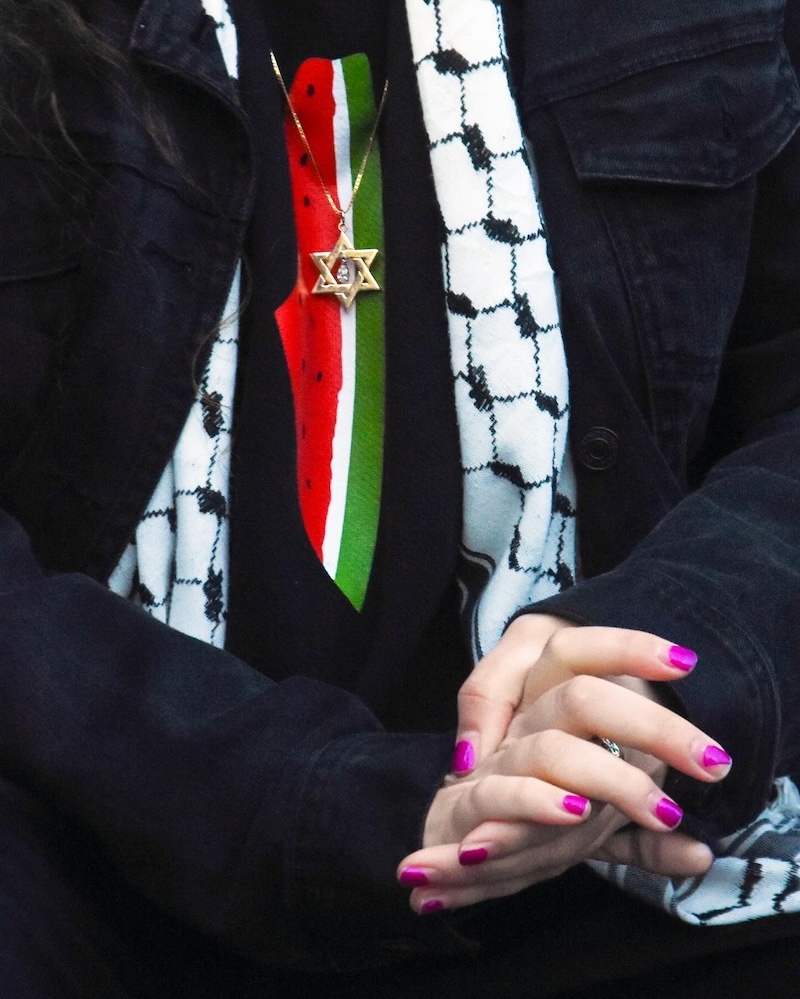
I’ve really resonated with the recent protest photography you’ve been doing. The images are so intimate and powerful.
I’m interested in personalizing the sacrifice and commitment of organizers. In this era of increased political awareness, I’ve noticed myself becoming somewhat averse to a certain frame and lens for documenting social movements. So I’ve been trying to react to that by finding new ways to look for the detail and texture that reveals the individuals who are working so tirelessly.
Hannah La Follette Ryan Recommends:
Hanging out with children
Watching cartoons after waking up from nightmares
New York City staples: the Village East Cinema, the Met on Friday nights, the Transit Museum, joyrides on the Staten Island Ferry, joyrides on the subway, public art.
Free Palestine!
- Name
- Hannah La Follette Ryan
- Vocation
- photographer (Subway Hands)
Some Things
Pagination
